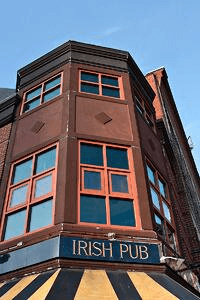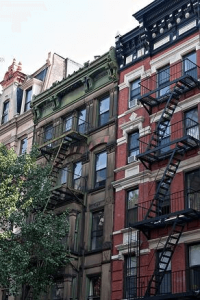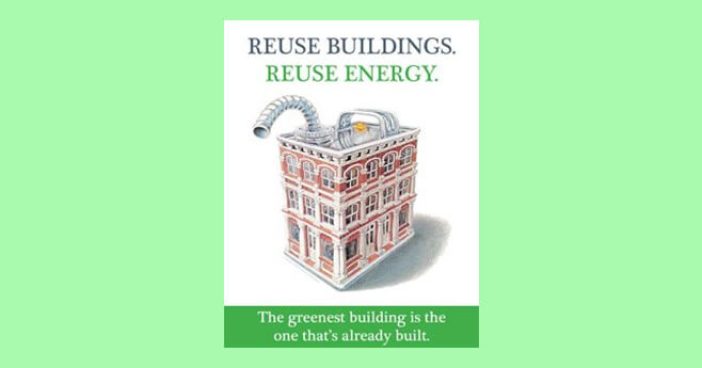 The prevalent idea among building owners is that old buildings are less energy-efficient and more costly — both financially and environmentally — to maintain. Destroying old buildings and constructing new ones therefore, seem more practical than repairing and maintaining old buildings. In the United States, an estimated one billion square feet of buildings are demolished and replaced annually. According to a projection by the Brookings Institution, 82 billion square feet of existing space will be demolished and replaced between 2005 and 2030 – representing about 25% of today’s existing building stock.
The prevalent idea among building owners is that old buildings are less energy-efficient and more costly — both financially and environmentally — to maintain. Destroying old buildings and constructing new ones therefore, seem more practical than repairing and maintaining old buildings. In the United States, an estimated one billion square feet of buildings are demolished and replaced annually. According to a projection by the Brookings Institution, 82 billion square feet of existing space will be demolished and replaced between 2005 and 2030 – representing about 25% of today’s existing building stock.
But when it comes to dealing with old buildings, is demolition to make way for the construction of a new building really practical? A recent study conducted by the National Trust for Historic Preservation entitled The Greenest Building: Quantifying the Environmental Value of Building Reuse concluded that reusing existing buildings is usually more cost-efficient than demolition and new construction.
The 2012 National Trust report is considered the most comprehensive study to date when it comes to comparing the environmental impact reductions of building reuse to new building construction. The study utilized a set of criteria in order to closely examine structures in six building typologies. The criteria included indicators within four environmental impact categories: climate change, human health, ecosystem quality, and resource depletion. Overall, the results indicated that retrofitting existing buildings allows for 4 to 46 percent more environmental savings in five of the six building typologies. The study included single-family homes, multifamily buildings, commercial offices, urban village mixed-use buildings, and elementary schools. In terms of warehouse-to-multifamily conversions however, retrofitting results to environmental impacts are 1 to 6 percent higher than demolishing and constructing new ones.
Reflecting on these statements during the course of my field surveys and historic building evaluations, it often occurred to me that older buildings would serve as wonderful structures for conversion and reuse because of their eye-catching façades and architectural details. Additionally, it is also equally important to consider that the reuse of historic structures may have less impact on the environment. For one, reuse of historic buildings avoids the energy use that would be expended in the procurement, manufacture, transportation and construction of new materials, which in turn will be used for constructing a new building. There are other numerous advantages to retrofitting, renovating, or the adaptive reuse of historic buildings. Try considering the three ideas below:
Historic buildings are often thought to be less energy efficient than newer buildings. However, data from the Energy Information Agency notes that on average, buildings built before 1920 and modern HVAC (heating, ventilation, and air conditioning) systems are designed and sited to utilize passive design strategies (wind, shade, etc.) for heating, cooling and ventilation. Modern buildings, on the other hand, were designed with mechanical systems that require huge amounts of energy and resources, cultivating the notion that resources seem to have an endless supply and that they are inexpensive, which in turn, results in exorbitant and unsustainable energy use.
- Buildings built before 1920 were often constructed using high-quality materials that may no longer be available. Therefore, reusing these materials ensures that the material does not end up in local landfills. If an older building is considered unsafe and therefore uninhabitable, it may be a good candidate for material reclamation which then reduces the costs associated with buying new materials.
- Additionally, historic buildings are often located in areas with existing utility infrastructures and nearby transportation facilities, whereas, new developments are often located on the outskirts of urban areas. New developments consequently require extensions of utility networks, roadways, and communication systems which adds considerably to the overall environmental impact.
- One definition of sustainability is “meeting the needs of the present without compromising the ability of future generations to meet their own needs.” As more than half of the existing buildings in the United States turn into older and historic buildings, finding ways to “reuse and recycle” these buildings emphasizes the importance and value of historic preservation in the arena of sustainability. More than preserving old buildings for their historic value, the retrofitting of old historic structures is also a practical measure that contributes to attaining environmental sustainability.
FirstCarbon Solutions (FCS) has an in-depth understanding of the complexities of historic buildings and sustainability issues. We welcome any opportunity to share our knowledge with you. For a consultation, click below:





